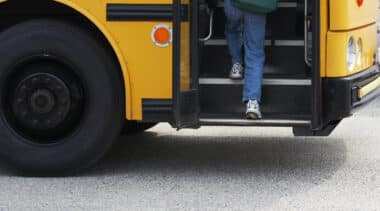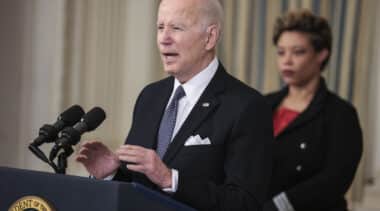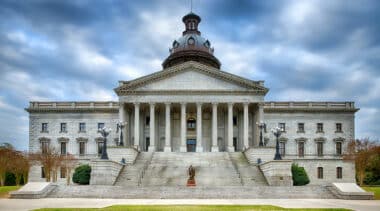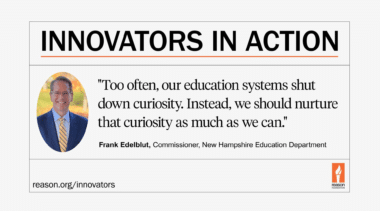Aaron Garth Smith is the Director of Education Reform at Reason Foundation.
Smith works extensively on education finance policy and his writing has appeared in dozens of outlets including National Review, The Hill, and Education Week.
Smith graduated from the University of Maine with a bachelor's degree in business administration and earned a Master of Business Administration from Texas A&M University. He is based in Phoenix, Arizona.
-
Frequently asked questions on student-centered funding
Student-centered funding puts student needs as the focus of education funding decisions.
-
Wisconsin’s open enrollment policy success is a model for states looking to increase educational opportunities
Wisconsin's public school open enrollment program has grown from serving less than 3,000 students in the 1998-99 school year to 70,428 students in the 2020-21 school year.
-
What will public schools do when federal pandemic relief funding runs out?
Pre-pandemic trends offer clues of how this might play out across state capitals.
-
Arizona K-12 Funding Reform Model
Arizona’s K-12 funding system is broken, but gaping differences in funding levels aren’t the only problem—it wasn’t designed to support an education ecosystem with robust school choice for families.
-
Data shows financial incentives matter for K-12 open enrollment policies
If school districts do not receive sufficient funding for transfer students, they’re not going to be as willing to participate in an open enrollment program.
-
Open enrollment policies don’t have to affect student athletics
There are a variety of ways states can handle student athletic eligibility questions that can arise when implementing open enrollment policies.
-
California needs school choice
There are also policy options outside of the typical school choice agenda that could provide more education options to California’s families.
-
Public school vouchers could increase education competition
Eliminating residential assignments and putting parents in charge of funding would give all families more agency over their students' education.
-
Biden doubles down on Title I funding increase in 2023 budget proposal despite program’s poor record
The administration wants to double the funding for a federal program that has failed in its aim to close achievement gaps between low-income and higher-income students.
-
The benefits of the pupil transportation policy reforms in Arizona’s SB 1630
Smaller, lower-cost vehicles would help students living in rural, geographically diverse areas of the state, but also assist urban families.
-
Commissioner Penny Schwinn explains how school finance reform would help Tennessee students
Tennessee's Commissioner of Education, Penny Schwinn, and Aaron Garth Smith talk about Tennessee's proposal to adopt an education funding system that focuses on student needs.
-
Testimony: Tennessee school finance reform would address student needs
Tennessee's school finance reform would give policymakers a more reliable mechanism for targeting dollars to selected categories of student needs including low-income students and students with disabilities.
-
South Carolina’s proposed education funding reform would benefit students and taxpayers
Gov. McMaster’s 2022 budget outlines a plan to simplify how the $5.4 billion in state education funding is spent.
-
Making Tennessee’s school finance system more transparent, flexible and fair
Only three percent of Tennessee's education funding was allocated based on student characteristics like being in a low income family, being in foster care, or needing special education services.
-
Education Commissioner Frank Edelblut on New Hampshire’s Learn Everywhere program
Aaron Garth Smith and New Hampshire Education Commissioner Frank Edelblut sit down to discuss Learn Everywhere.
-
K-12 funding in Tennessee: A student-centered approach
By adopting a student-centered funding model, Tennessee would replace the state's outdated education finance system that lacks transparency and local control.
-
Public education needs the private sector
A significant portion of the $751.7 billion spent annually on K–12 education is used to purchase non-public goods and services.
-
New York school spending hits record high
New York spends $30,772 per student each year.


















